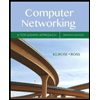
Hi there, I'm facing significant challenges with problem-solving and could really use your assistance. Specifically, I require help with question 2.5 part B, and in order for you to address it comprehensively, I need to include the details of question 2.4 because you need question 2.4 to answer 2.5. I appreciate your support and kindly ask that you guide me through the solution for question 2.5 part B, providing a step-by-step explanation with full detail and visual representation.
I have added my answer because my answer is incorrect and I don't know why but I have provide my answer can you please fix it because my answer is incorrect. Again I only need help with question 2.5 part B.
question 2.5
2.5 Give informal descriptions and state diagrams of pushdown automata for the languages in Exercise 2.4
question about 2.4:
2.4 Give context-free grammars that generate the following languages. In all parts, the alphabet Σ is {0,1}.
b) {w | w starts and ends with the same symbol}
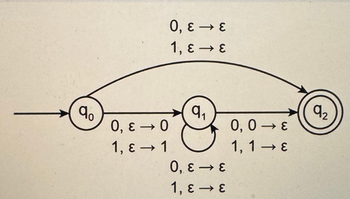
Trending nowThis is a popular solution!
Step by stepSolved in 3 steps with 2 images

- If you think about the problems that might be solved by each of the possible solutions, you'll put yourself in a better position to find answers to the problems that are caused by the design of the framework. As a result, you will be better prepared to deal with challenges that manifest themselves when you are constructing the framework. Because of this, you will be in a better position to deal with problems that crop up when working on the design of the framework. Do you believe that we will be able to discover answers to these problems by using cloud computing? What do you believe the purpose of this talk is, taking all of above into consideration?arrow_forwardWhat motivates you to get a degree at a university? In your Written Assignment, you will be asked to answer this question in depth. In response to this subject, you will compose a paragraph (three or four phrases).arrow_forwardWhen compared to other SDLC models, how does the waterfall approach's lack of certain phases make it stand out? In case you're interested in learning more about Barry Boehm's inspirations, you may want to check this out.arrow_forward
- What visuals spring to mind when you consider email? When an email is sent, what happens to it? Take notes on what you've learned thus far. Does anyone have any idea what may be causing these differences and why they persist? Do your models accommodate varying levels of complexity?arrow_forwardWhat comes to mind when you think about email? Which of these approaches to sending emails is the most efficient? Create a mental list of everything you've picked up thus far. What sets them apart from other things, and why are they so prevalent? What are the different degrees of detail (or abstraction) that may be found in models?arrow_forwardHow much of a focus should be placed on defining "critical thought"? Your feedback on this assertion would be very interesting to me.arrow_forward
- What conjures up in your thoughts when you think of an email? What factors into the length of time it takes to send an email from one place to another? Keep a diary to jog your memory of significant events and details. Where do they diverge from one another? Do you know the level of detail (or abstractness) that each model has?arrow_forwardCentral Pacific University:On a warm, sunny day in late October, Chip Puller parks his car and walks into his office at CentralPacific University. It feels good to be starting as a systems analyst, and he is looking forward tomeeting the other staff. In the office, Anna Liszt introduces herself. “We’ve been assigned to work asa team on a new project. Why don’t I fill you in with the details, and then we can take a tour of thefacilities?”“That sounds good to me,” Chip replies. “How long have you been working here?” “About five years,”answers Anna. “I started as a programmer analyst, but the last few years have been dedicated toanalysis and design. I’m hoping we’ll find some ways to increase our productivity,” Anna continues.“Tell me about the new project,” Chip says. “Well,” Anna replies, “like so many other organizations,we have a large number of microcomputers with different software packages installed on them. Fromwhat I understand, in the 1980s there were few personal computers and…arrow_forwardWhen you hear the word "email," what are some of the first things that spring to mind? What happens to an email once it has been sent? Make a note of all the things you have learned that you didn't know previously. I'm curious if anybody has any ideas on what may be causing these discrepancies. Does your organization have a range of model complexity?arrow_forward
- How do you see the information included in an email when you read it? Which of these methods is the best time- and resource-effective approach to forward an email? Make a list of everything you've learned along the road and everything you've picked up along the way. What differentiates them from other things, and why are they so widespread in the world today? How many distinct levels of detail are there in models, or alternatively, how many distinct levels of abstraction can be found in models?arrow_forwardIf you take into account the worries and roadblocks that occur with each of the prospective solutions and the problems you're going to experience when constructing the framework, you'll be in a better position to triumph over them. As a result, you'll be better prepared to deal with the challenges you'll inevitably face as you build the framework. Therefore, you will be better prepared to deal with the difficulties that are inevitable in the course of creating the framework. Do you believe these problems can be fixed using cloud computing? Given this, what are your thoughts on the relevance of discussing it now?arrow_forwardWhen it comes to SDLC models, how far along the spectrum does the waterfall approach go? If you're interested in learning more about Barry Boehm's findings, you might do some digging here.arrow_forward
 Computer Networking: A Top-Down Approach (7th Edi...Computer EngineeringISBN:9780133594140Author:James Kurose, Keith RossPublisher:PEARSON
Computer Networking: A Top-Down Approach (7th Edi...Computer EngineeringISBN:9780133594140Author:James Kurose, Keith RossPublisher:PEARSON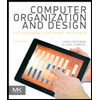 Computer Organization and Design MIPS Edition, Fi...Computer EngineeringISBN:9780124077263Author:David A. Patterson, John L. HennessyPublisher:Elsevier Science
Computer Organization and Design MIPS Edition, Fi...Computer EngineeringISBN:9780124077263Author:David A. Patterson, John L. HennessyPublisher:Elsevier Science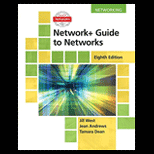 Network+ Guide to Networks (MindTap Course List)Computer EngineeringISBN:9781337569330Author:Jill West, Tamara Dean, Jean AndrewsPublisher:Cengage Learning
Network+ Guide to Networks (MindTap Course List)Computer EngineeringISBN:9781337569330Author:Jill West, Tamara Dean, Jean AndrewsPublisher:Cengage Learning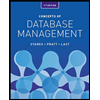 Concepts of Database ManagementComputer EngineeringISBN:9781337093422Author:Joy L. Starks, Philip J. Pratt, Mary Z. LastPublisher:Cengage Learning
Concepts of Database ManagementComputer EngineeringISBN:9781337093422Author:Joy L. Starks, Philip J. Pratt, Mary Z. LastPublisher:Cengage Learning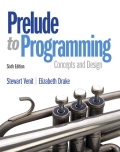 Prelude to ProgrammingComputer EngineeringISBN:9780133750423Author:VENIT, StewartPublisher:Pearson Education
Prelude to ProgrammingComputer EngineeringISBN:9780133750423Author:VENIT, StewartPublisher:Pearson Education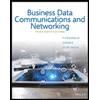 Sc Business Data Communications and Networking, T...Computer EngineeringISBN:9781119368830Author:FITZGERALDPublisher:WILEY
Sc Business Data Communications and Networking, T...Computer EngineeringISBN:9781119368830Author:FITZGERALDPublisher:WILEY





